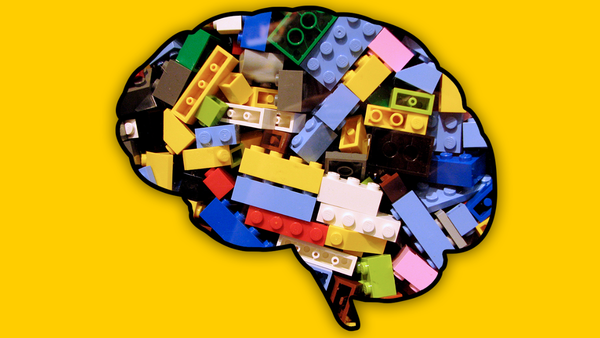Does Keir Starmer use ChatGPT to write his social media posts?
In the dynamic landscape of communications, politicians are unlocking synergies and leveraging technology—ending up sounding totally inhuman.

He's the unpopular technocratic Labour Prime Minister who has been compared to a Dalek, a photocopier and even a concrete bollard.
But has Sir Keir Starmer set light to his last lingering vestiges of humanity by using ChatGPT to write social media posts?
That's the question being asked underneath the PM's tweets by critics who claim to have detected tell-tale signs of AI slop in his posts.
In the comments below a recent post you can see in the next section, the controversial hard-right, pro-mass deportation independent MP Rupert Lowe wrote: "None of this means ANYTHING. Speak like a human rather than this boring AI vomit."
Another commenter using the pseudonym Ban The BBC added: "Enough with your AI chat gibberish."
Similar accusations have dogged the PM for months and even years.
It should be noted that most critics of the left-wing PM‘s posts are very much on the right, which is not relevant to our coverage. We're not interested in taking sides.
ExStarminating creativity
We face a choice: renewal or decline.
— Keir Starmer (@Keir_Starmer) September 23, 2025
Let’s choose unity over grievance, progress over division.
Britain’s best days are ahead — and my government is moving forward with purpose.
At the risk of being hypocritical, we asked ChatGPT to help us do some deep research and scan Starmer's tweets for signs of a human soul (very hard to find) and traces of AI slop (a bit easier to detect).
Earlier this year, New Scientist broke the incredible story that Peter Kyle, who was the UK’s technology secretary, used ChatGPT for policy advice.
We expect the FOI gremlins at Number 10 Downing Street will be a bit more hip to similar freedom of information requests this time around - but we'll do our best to get what we can.
In the meantime, here's what we know so far:
The first and most obvious sign of AI in the PM's posts is the dreaded em dash (—), a punctuation mark rarely used in casual British writing apart from perhaps by poets or particularly pernickety sub-editors.
Prior to 2023, just after the release of ChatGPT, Starmer’s tweets generally did not feature the em dash at all and were composed of straightforward sentences with standard punctuation.
Around mid-2023, however, followers began noticing tweets featuring this pilloried punctuation mark. For example, in May 2025, he tweeted: "It’s time to look forward — to move on from the stale old political fights and to find common sense, practical solutions that improve the lives of British people."
This use of a long dash to break a sentence is exactly the kind of construction ChatGPT tends to produce (so much so that people have nicknamed the em dash the ChatGPT hyphen). This humble floating line has also inspired endless screeds on LinkedIn from copywriters keen to show a difficult marketplace that they have a deep understanding of punctuation that prospective clients do not care about.
Two-tier grammar

Beyond punctuation, Starmer’s Twitter voice took on a noticeably ChatGPT-like tone starting in 2023. This includes a very formal, balanced sentence structure and often a kind of rhythm or mirroring in phrasing.
For instance, many of his tweets now use the classic "Not just X, but Y" formulation - a structure widely associated with AI-written content.
Observers on social media immediately flagged this formulaic phrasing, with comedian Jay Foreman quipping: "Hey Siri, write the most generic possible tweet that could have come from any politician."
Another sign of AI is the emergence of mirrored or parallel sentences in his tweets.
Today, Starmer often tweets in paired clauses that echo each other in structure.
For example: "We face a choice: renewal or decline. Let’s choose unity over grievance, progress over division. Britain’s best days are ahead — and my government is moving forward with purpose."
'Human politicians can speak in contrasts, but doing so this consistently on Twitter – and with such neat structure – is unusual," our AI researcher said.
"In Starmer’s case, this style really became pronounced in 2023 and thereafter. Earlier tweets (2020–2021) were far more blunt (e.g. calling out opponents or stating a position in plain terms).
"By contrast, 2023–2025 tweets often sound like polished mini-speeches, featuring a measured, even-handed tone and almost neutral, carefully chosen words. This 'measured if slightly florid and boring style' is exactly what one expects from ChatGPT-speak."
When did Starmer start using ChatGPT?

As mentioned earlier, the tone shift appeared to take place in early 2023, with tweets becoming more formal and anodyne.
Around this time, Starmer admitted he was getting "masterclasses' on ChatGPT from his son - a coincidence, perhaps, but notable. By 2024, especially after moving into a prime ministerial role, his posts consistently used balanced sentences, bureaucratic wording, and that calm, explanatory cadence typical of AI-assisted text.
Tweets also grew longer, often running to several sentences with commas, semicolons, or (sorry to mention them yet again) em dashes. They began to read less like social media and more like mini press releases - smooth, grammatical, but lacking spontaneity. The partisan jabs of 2020–21 gave way to a neutral, technocratic tone, often characterised by emotionally flat calls to action.
Another stylistic shift was the embrace of lofty, abstract concepts such as unity, common-sense solutions, national renewal and patriotic duty. Earlier posts were concrete and critical; the newer ones sound profound without saying much, a trait of AI-style rhetoric.
Many of these tweets conclude with bland slogans: “Britain’s best days are ahead,” “Change begins now,” “Now is the time to unite.” Even sensitive topics, such as antisemitism, are couched in context-setting clauses followed by a generic stance. It’s polished and earnest, but also strikingly impersonal, as if filtered through a communications algorithm.
"This place has become absurd"
The surge in AI-written speeches in Britain's House of Commons visualised: https://t.co/7WisJcSrcd pic.twitter.com/oWero8aAEU
— François Valentin (@Valen10Francois) September 10, 2025
The implications of using ChatGPT to speak to the electorate are not just concerning; they're chilling (and yes, we wrote that sentence ourselves to make a point).
The PM is often accused of being remote from the concerns of ordinary people. Let's say he really does use ChatGPT to write social media posts. What does that say about his desire to connect with the British population?
He's a man who allegedly never dreams and doesn't have a favourite book. Should a nation famed for its creativity really be led by a characterless, emotionless leader who can't even be bothered to show us a bit of his human side on social media?
Unfortunately, he's not the only politician accused of relying on ChatGPT.
Since ChatGPT’s release in 2022, Commons speeches have seen a rise in the use of formulaic openers like "I rise to speak" which are not typically heard in British politics.
MPs are also leaning on giveaway words such as “underscores” and “streamline,” which are favourite stock terms of large language models. That's according to analysis of Hansard, a written record of parliamentary proceedings, by The Pimlico Journal, which found that highly sensitive speeches about topics such as the forced deportation of Ukrainian children exhibit tell-tale signs of AI.
Tom Tugendhat, former Tory security minister, spoke in the Commons to accuse MPs of becoming over-reliant on ChatGPT.
He said: “All we hear from government members in ChatGPT-generated press releases is ‘I rise to speak’, ‘I rise to speak’, ‘I rise to speak’. ChatGPT knows you are there.
“That is an Americanism that we do not use. Still, they should keep using it, because it makes it clear that this place has become absurd.”
On X, he later wrote: "If you can’t make an argument without the whips giving you the question or ChatGPT turning a handout into a speech, who are you representing? Clearly not the electorate."




